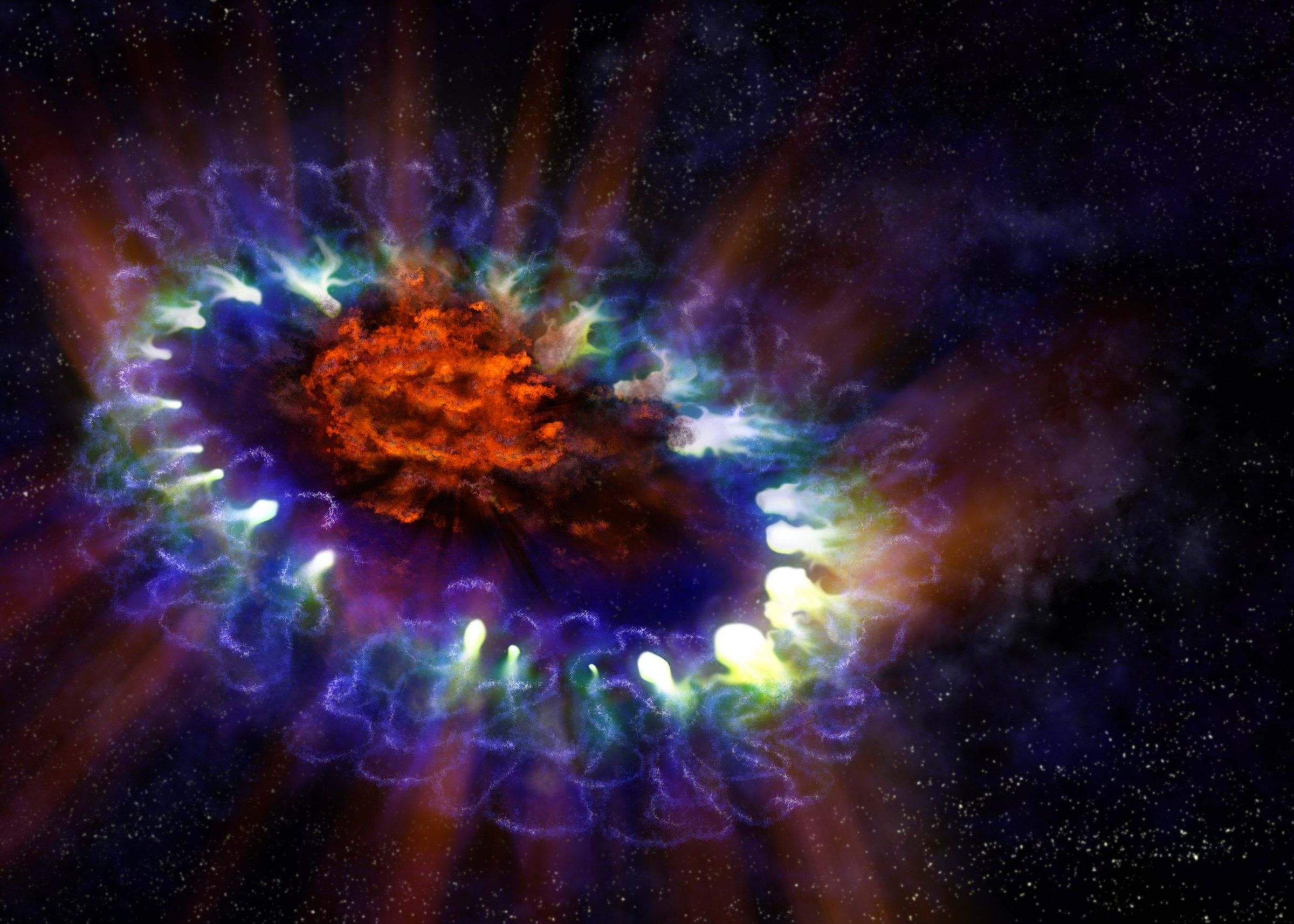
It’s one of the astronomy’s most popular fun facts, trotted out by everyone from the geeky 1980s cosmic icon Carl Sagan to his impossibly cool heir Neil deGrasse Tyson: most of the elements in our bodies, in the air we breathe and in the rocks beneath our feet—everything except the hydrogen in H2O—was cooked up inside a star. Before the first stars flared into existence, the universe was mostly hydrogen, a bit of helium and just a dash of lithium. All of the rest, including oxygen, carbon, nitrogen, silicon and iron were forged out of lighter atoms by thermonuclear reactions that power the Sun and its gazillions of brethren, then spewed out into space when those first stars ran out of steam.
It sounds like something that happened long ago and far away—and for the stuff we’re made of, it did. But the process is still going on, and new observations of a recently deceased star in the Large Magellanic Cloud, just one galaxy over from the Milky Way, are giving astronomers a rare glimpse of how it happens. Using the multiple antennas of the Atacama Large Millimeter-submillimeter Array telescope (ALMA), located in the high Atacama Desert in northern Chile, astronomers have imaged a cloud of cool dust coagulating in the aftermath of a gigantic supernova explosion.
(PHOTOS: The 50 Most Dazzling Pictures From Space)
That cosmic detonation was spotted back in 1987, the first supernova visible to the naked eye since Johannes Kepler saw one in 1604—which itself was less than a decade, unfortunately, before Galileo could point his first handmade telescope at the heavens. But in 1987, astronomers aimed every sort of telescope they could at the dying star, and have continued to watch as the initial flash faded and the shock wave from the explosion spread outward, creating a bright ring of light as the expanding energy front slammed into surrounding gases.
And now, inside the ring, ALMA has finally spotted the dust astronomers were expecting to see condensing out of the supernova material, made in part of compounds such as carbon monoxide and silicon monoxide. Eventually, the dust will get mixed into the clouds of gas and dust left from stars that died long ago, and someday, millions or even billions of years from now, those clouds will collapse to form new stars, new planets and maybe even new creatures.
(MORE: Twin Planets: The Same, But Very Different)
That bit of cosmic poetry aside, the discovery of this one dust cloud also answers a longstanding astronomical mystery. Many galaxies are choked with dust, and while supernova explosions had long been thought to be a likely source, scientists prefer certainty over assumptions. Now they have it.
“Really early galaxies are incredibly dusty and this dust plays a major role in the evolution of galaxies,” said Mikako Matsuura of University College London, in a statement. “Today we know dust can be created in several ways, but in the early universe most of it must have come from supernovae. We finally have direct evidence to support that theory.”
(VIDEO: Phone Home: ASA’s Cosmic Call Center)
More Must-Reads from TIME
- Cybersecurity Experts Are Sounding the Alarm on DOGE
- Meet the 2025 Women of the Year
- The Harsh Truth About Disability Inclusion
- Why Do More Young Adults Have Cancer?
- Colman Domingo Leads With Radical Love
- How to Get Better at Doing Things Alone
- Michelle Zauner Stares Down the Darkness
Contact us at letters@time.com